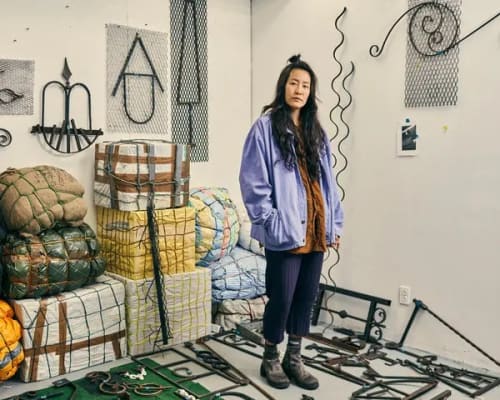by Siddhartha Mitter
Eighty pieces of scrap metal lay on the floor of Maia Ruth Lee’s studio in Brooklyn. She had obtained them from the Gowanus scrap yards, remnants from windows and gates, and welded them into rune-like shapes.
They were symbols, Ms. Lee, 36, explained, with meanings of her invention, to be installed on a large wall in the Biennial. A handout chart would help viewers “read” them.
“As humans, we’re always yearning for a sign,” she said.
Born in South Korea, Ms. Lee grew up in Nepal, where her missionary parents translated the New Testament into the Sherpa language — a decades-long project that involved first creating a written alphabet for the previously spoken-only tongue.
“I was surrounded by language and lexicography, and quite enamored by it,” Ms. Lee, who is not religious herself, said.
Returning to Korea, Ms. Lee studied painting at an art school with a conservative curriculum. She moved to New York in 2010. Her practice has grown eclectic — drawing, publishing zines, sculpture — since she put down roots.
But she keeps coming back to ideas of displacement and being in two different worlds. Her second installation in the Biennial involves luggage made of burlap bags — the kind that Nepali and other migrant workers commonly use. She brought the materials back from Kathmandu, where her parents still live.
“The tarp, the rope, the rice bags,” she said. “These objects all contain a story.”

